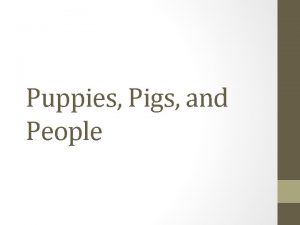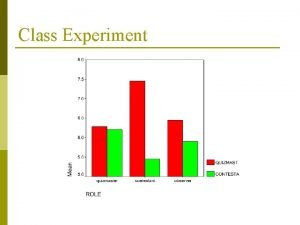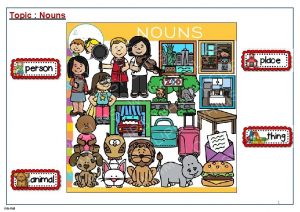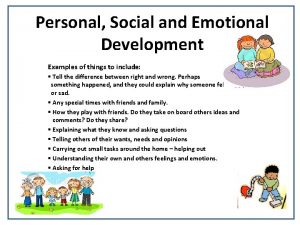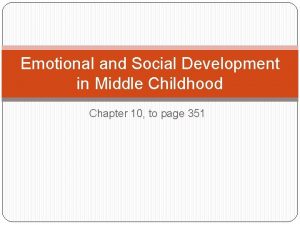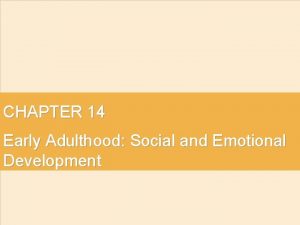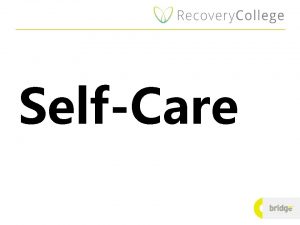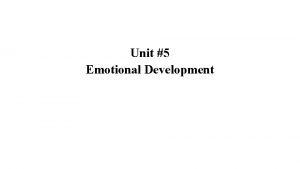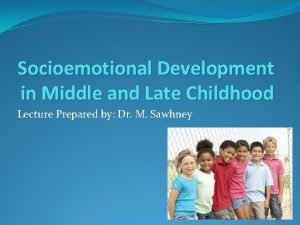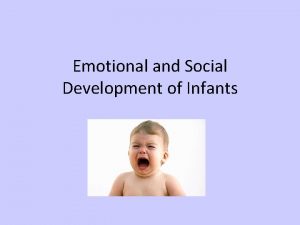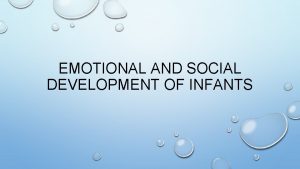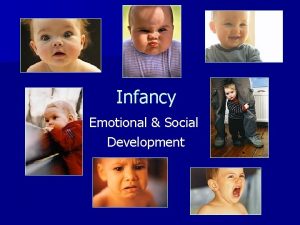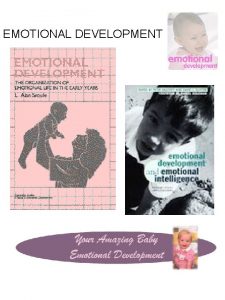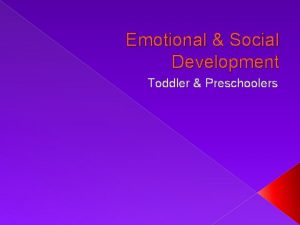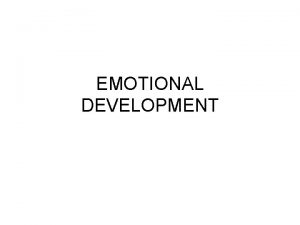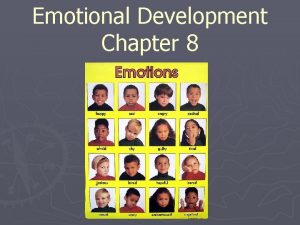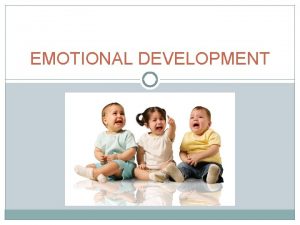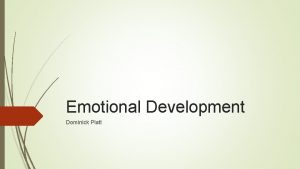Physical and emotional development in puppies When puppies














- Slides: 14

Physical and emotional development in puppies • When puppies are born, they are helpless. • They are blind and deaf and unable to move other than to crawl, orientating to warmth rather than cold. • They are reliant on the care of their mother in order to survive. • Their development is very rapid and by 8 weeks of age they are considered in law to be able to be homed as independent individuals. • In practice they are physically ready earlier than this and there is a great deal of debate about the ideal age for rehoming. • It is likely that this will be variable depending on many factors, including the quality of the rearing environment.

Prenatal phase • It has been shown that maternal stress influences puppy development and can have an effect on their emotional stability and resilience later in life through the functioning of the HPA axis. • Puppies can learn about chemosensory cues during this phase, and this plays an important part in post-natal olfactory development.


Neonatal phase (0 -2 weeks) • During this phase the puppy is dependent on its mother for survival, • As this phase ends the eyes and ears open and the dam starts to withdraw attention, which causes the puppy to become more active.

Neonatal phase (0 -2 weeks) • First 3 days: Flexor dominancce • 3 days-4 weeks: extensor dominance

• 0 -2 weeks: Magnus reflex

• 0 -2 weeks: Cross extensor reflex

• 0 -4 weeks: Rooting reflex

Transition phase (2 -3 weeks) • During this phase there a number of developments. • The opening of the ears and eyes means that the puppy becomes more responsive to environmental stimuli. • Its locomotion gradually changes from a crawl to a walk and it then starts to leave the nest and explore. • The puppy starts to notice others, initially its litter mates and mother, and it also begins to eat

Socialisation phase (3 -12 weeks) • At this stage the puppy seeks interactions that are not maternal, • It will play with its litter mates as motor skills mature and also interact with people. • Learning begins both about the environment and also about interactions with others through play. • Learning through socialisation and habituation during this phase is vital for appropriate preparation for life in the domestic environment. • The suitability of the rearing environment is determined by the destination environment and it is helpful for these to be as similar as possible. • This will ensure that the developing puppy is exposed to as many of the stimuli that it will encounter in adulthood as possible. • While exposure is an important part of the process of learning at this age it is important to remember that puppies need to be in positive emotional state in order for socialisation and habituation to occur. • If the puppy is in a negative emotional state, then sensitisation will make the puppy more vulnerable to the development of

Primary Socialisation phase (3 -5 weeks) • Social interactions within littermates are important • Puppies learn how to interact with their littermates and environment. • Mother dog is in a standing position during nursing. • Bite inhibition is learned during this stage.

Second socialisation phase(6 -12 weeks) • Weaning is completed during this stage. • Panic related behaviors started to appear. • the puppy needs to be socialized to people and any other species that it should easily get along with, and not show any predatory behavior toward. • This may include other house pets. • During the socialization period, every effort should be made to expose the puppy to a wide range of different sights, sounds, and other sensory experiences. • Environmental complexity is still very important in assuring normal neurological and emotional development. • Also, the sensitive capacities of the puppy have improved and it is easily able to habituate to a variety of environmental stimuli.

Socialisation phase • Actively approaches people: 3 -5 weeks – Seeking (desire) system • • Avoidance of strangers: 814 weeks – Fear (anxiety) system • • Emotional stress with separation: 3 weeks – Panic (grief) system • Fear of strange objects: 7 -14 weeks – Fear (anxiety) system • • Play fighting: 5 weeks –

Juvenile phase (12 weeks - sexual maturation. ) • The length of this phase varies with breed but sexual maturation roughly occurs between 6 and 12 months. • Certain behaviours develop during these periods which we need to be aware of in order to help the puppy develop into a confident well-adjusted adult. • These developments are linked to emotional states. • The learning that occurs at this age will be informative in terms of the likely emotional responses and behavioural responses to situations and stimuli later
 Puppies pigs and people
Puppies pigs and people Similarities and contrast
Similarities and contrast Hush puppies tipping point
Hush puppies tipping point Topic
Topic Coccidia in cats
Coccidia in cats Fictional character examples
Fictional character examples 6 life stages
6 life stages Middle childhood emotional development
Middle childhood emotional development Emotional and social development in middle adulthood
Emotional and social development in middle adulthood Emotional development in early adulthood
Emotional development in early adulthood Emotional changes in childhood
Emotional changes in childhood Social and emotional development in late adulthood
Social and emotional development in late adulthood Self care action plan
Self care action plan Emotional development definition
Emotional development definition Late childhood emotional development
Late childhood emotional development
